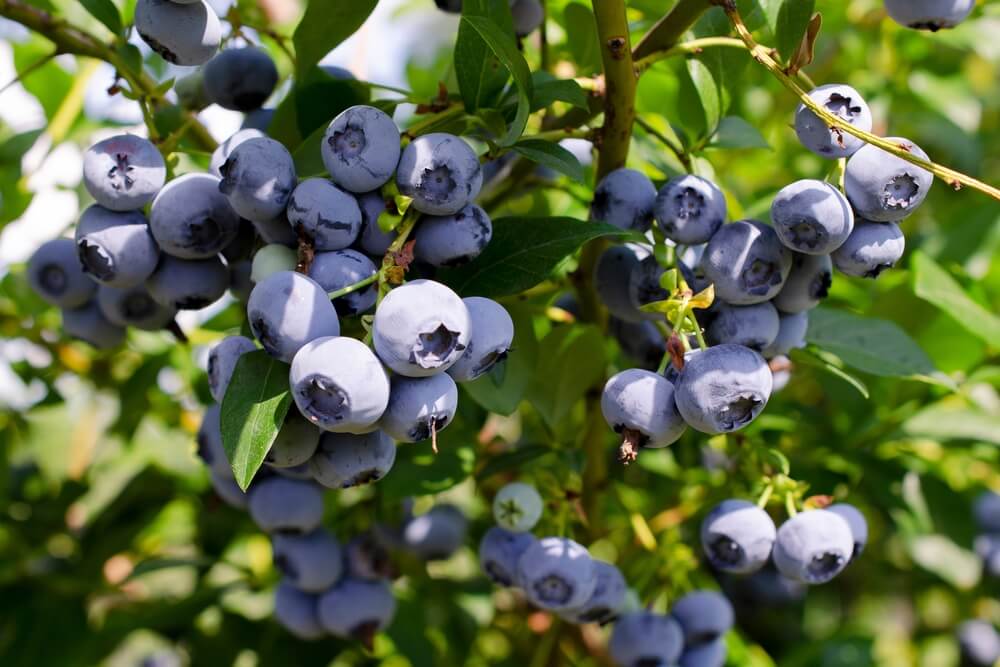How To Grow Blueberry Shrubs At Home From Seeds, Cuttings, Or Seedlings – The Ultimate Guide!
Welcome! This article contains affiliate links, meaning I get a commission if you decide to make a purchase through my links, at no extra cost to you.
Growing blueberries is one of gardening’s most rewarding adventures! Imagine stepping out your back door on a warm July morning and picking handfuls of plump, sweet blueberries for your fluffy, homemade pancakes. This all-in-one blueberry growing guide shows how – without fuss. So, come with us if you’re dreaming of homemade pies, antioxidant-packed smoothies, or popping fresh berries straight from the shrub.
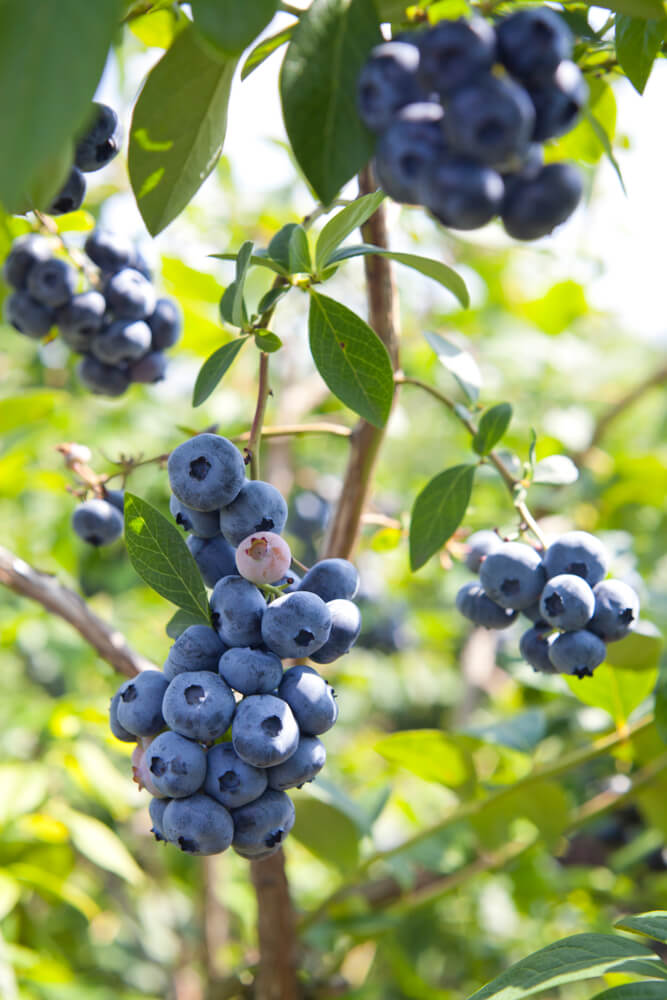
Sound enticing?
Then let’s grow some epic, delicious blueberries!
Growing Blueberry Shrubs From Seed
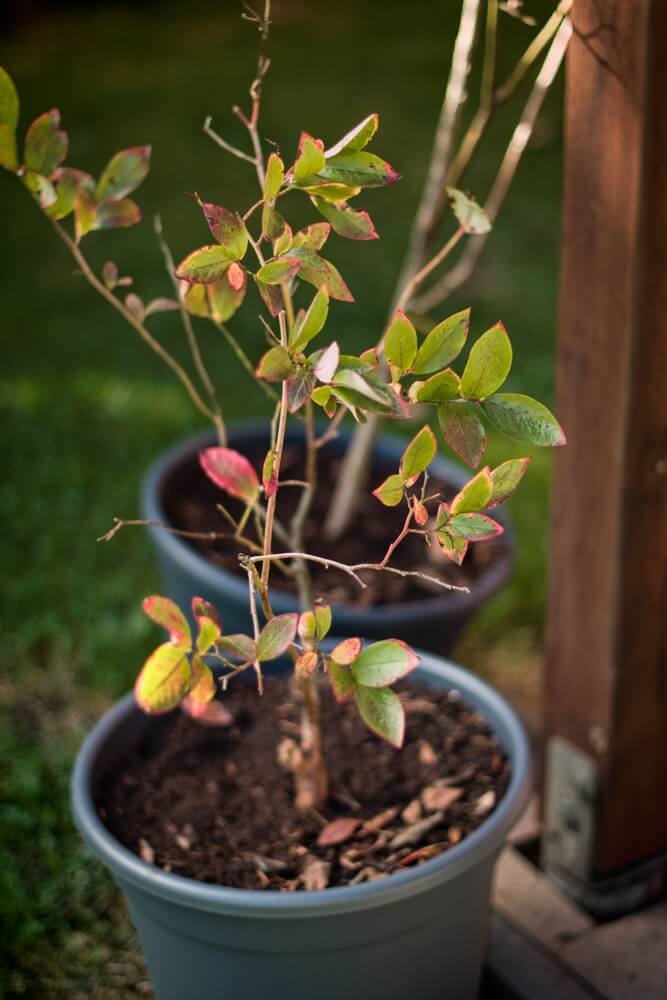
Growing blueberries from seed can be a test of your patience. We’re talking two to seven years before you see your first berries! But hey, it’s practically free (or dirt cheap). And, there’s something magical about nurturing a tiny seed into a fruit-producing powerhouse.
(Fair warning, though: it’s WAY easier to grow them from cuttings if you want to skip the marathon approach.)
Step 1 – Harvest And Prep Your Seeds
Grab some fresh, ripe blueberries (store-bought ones work just fine!) and mash them in a bowl filled with water. Let the mixture sit for a few minutes, then swish it around. The good blueberry seeds will often sink to the bottom while the pulp floats. Strain out the pulp, rinse your seeds, and let them air dry on a paper towel for about a week.
Step 2 – Give Them The Cold Shoulder (Literally)
Blueberry seeds need what’s called “cold stratification” – basically, they need to think winter happened. Mix your dried blueberry seeds with slightly damp peat moss or sand. Then seal them in a plastic bag and store your blueberry seeds in the fridge for 90 to 120 days. Mark your calendar because you’ll forget when you started!
Step 3 – Start Your Indoor Nursery
After their chilly vacation, plant the blueberry seeds about ¼ inch deep in a seed-starting mix (acidic potting soil works great). Keep the berry’s soil consistently moist but not soggy. (Blueberries like soil like a wrung-out sponge.) Place them under grow lights or in a bright, warm spot. Germination of blueberry seeds can take anywhere from a few weeks to several months. So don’t panic if nothing happens right away.
Step 4 – Baby Them Along
Wait for your seedlings to sprout their first true blueberry shrub leaves (not just the initial seed leaves). Then, transplant them into individual small pots. Try keeping your blueberry shrubs indoors for at least their first year. Then, gradually introduce them to outdoor conditions.
Step 5 – The Long Game
After 2 to 3 years, your little blueberry babies will be ready to transplant outside. Select a sunny spot for your berry shrubs, using well-draining, acidic soil that is rich in organic matter. Mulch around them with pine needles or bark chips. And then, wait some more! You’ll start seeing berries around year 3 to 7, depending on the variety.
Read More – How To Grow Gorgeous Japanese Maple Trees From Seed In Your Home Garden – The Ultimate Guide!
Growing Blueberry Shrubs From Cuttings
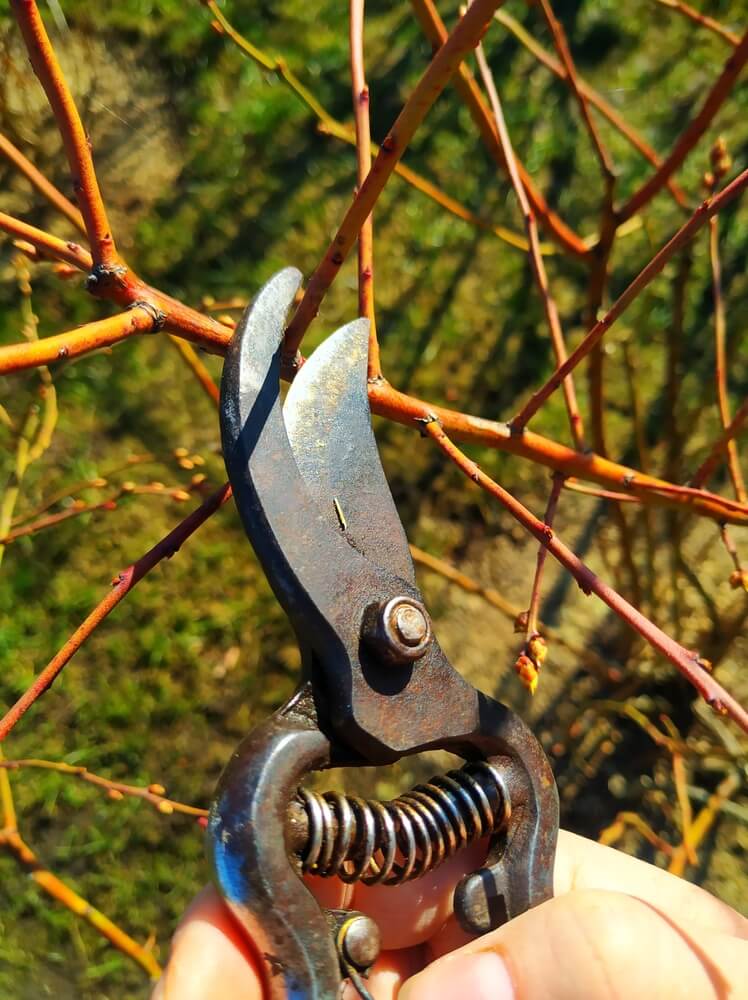
Growing blueberries from cuttings is your super shortcut to blueberry bliss! Instead of years of waiting, you’re looking at established plants in just one growing season.
Step 1 – Timing is Everything
Take your cuttings in late winter or early spring when the plants are dormant, or in mid-summer from new growth. You want healthy, pencil-thick blueberry shrub shoots about 4 to 6 inches long. Make your cuts just below a shrub node (those little bumps where leaves grow) and remove the bottom leaves. Keep just 2 to 4 blueberry leaves at the top.
Step 2 – Dip And Plant
Dip the cut end in rooting hormone (available at any garden center – it’s like vitamins for blueberry plant babies). Plant the blueberry cutting roughly two inches deep in a pot filled with a 50-50 mix of peat moss and perlite. Water your blueberry seedling well, but never let it sit in soggy soil.
Step 3 – Create A Mini Greenhouse
Cover your berry pot with a clear plastic bag or place your blueberry cutting in a humidity dome to maintain high moisture levels. Put it in bright, indirect light – a north-facing window works perfectly. Keep the blueberry’s soil consistently moist and mist the leaves of the cutting occasionally. In 6 to 12 weeks, you should see new growth, which means roots are forming!
Step 4 – Graduation Day
Once your blueberry cutting has developed a sound root system (gently tug – if there’s resistance, you’ve got blueberry roots!), you can now transplant your blueberry cutting to a larger pot or directly into your garden. Just remember to harden the tiny cutting off gradually by exposing it to outdoor conditions for a few hours each day over a period of a week.
Read More – How To Grow Epic Fig Trees From Seeds Or Cuttings – The Ultimate Guide!
Growing Blueberry Shrubs From Seedlings Or Nursery Transplants
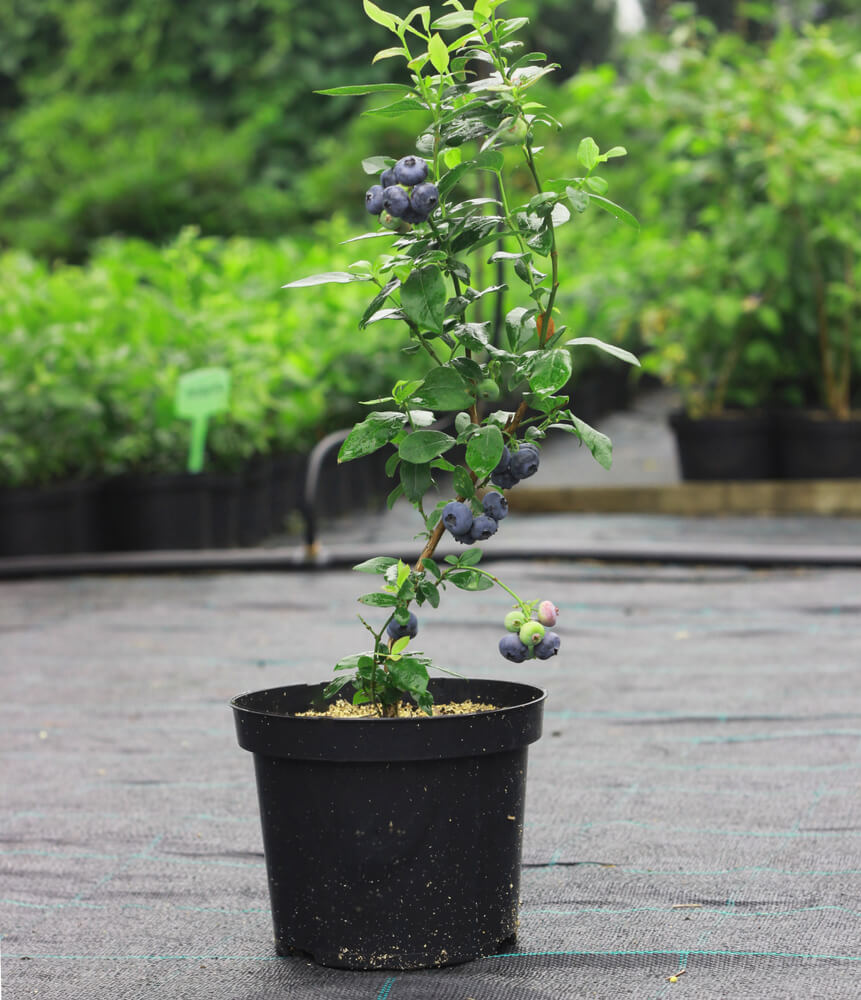
Here is the ultimate shortcut – you’re basically buying someone else’s hard work and patience! You’ll have established plants that could give you berries in their very first season.
Step 1 – Choose Your Champions
Visit a reputable nursery and select healthy-looking plants. Look for varieties that suit your climate zone and are compatible with each other for cross-pollination. Two different varieties will give you better berry production than just one lonely bush.
Step 2 – Prepare Your Planting Site
Blueberries are particular about their soil – they require an acidic environment (pH 4.5 to 5.5), well-draining soil, and rich in organic matter. Test your soil first, then amend it with sulfur to lower the pH if necessary, and incorporate plenty of compost or aged manure. Select a sunny spot for your berry shrub that offers good air circulation.
Step 3 – Plant Like A Pro
Dig holes twice as wide as the berry shrub’s root ball but only as deep – you don’t want to plant them deeper than they were growing in the nursery. Space them 4 to 6 feet apart (they like their personal space). Backfill with your amended soil, then water thoroughly. Apply a 2- to 3-inch layer of acidic mulch, such as pine bark or needles.
Step 4 – Set Them Up For Success
Water regularly, but avoid overwatering – blueberries dislike wet feet. During their first year, remove any new flower buds that appear. Doing so helps the young blueberry shrub focus on establishing a strong root system. After year one, you can let them bloom.
Read More – How To Grow Delicious Lettuce From Seed To Harvest For Epic Homemade Salads!
Blueberry Shrub Growing Requirements
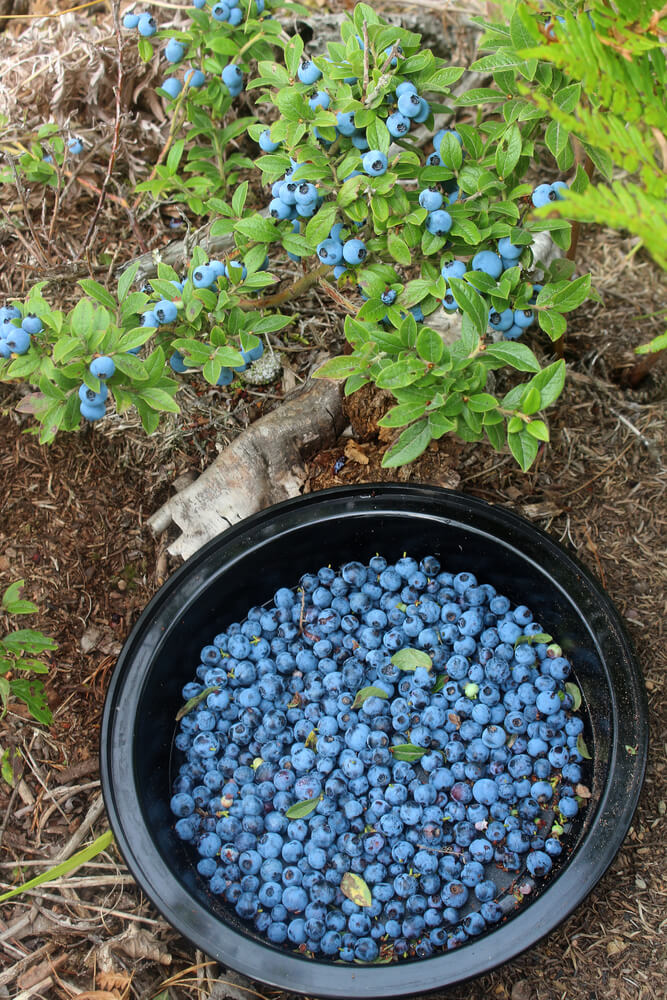
Here’s everything you need to know about how to care for and nurture your growing blueberry shrub.
Sunlight
Blueberries are sun worshippers! They need at least 6 to 8 hours of direct sunlight daily to produce their best berry crop. They’ll tolerate partial shade. But you’ll get fewer berries, and they won’t be as sweet. Think of sunlight as their daily dose of happiness – the more they get, the more generous they’ll be with the fruit. If you’re dealing with some shade, morning sun is more critical than afternoon sun. So, prioritize east-facing locations over west-facing ones.
Climate
These berries are surprisingly tough cookies when it comes to cold weather. Most blueberry varieties easily tolerate temperatures as low as -20°F to -30°F once established. They actually need those chilly winter hours (300 to 1,000 hours below 45°F) to properly set berry fruit.
Soil + Fertilizer
Blueberry shrubs require acidic soil with a pH level ranging from 4.5 to 5.5. Add a generous amount of ripe organic matter, such as compost, aged pine bark, or peat moss. For fertilizer, skip the regular stuff and opt for acid-loving plant food or organic options, such as blood meal and bone meal. A small amount of sulfur added to the soil each year helps maintain the acidic pH they prefer.
Pollination
Most blueberries are self-fertile, meaning one bush can pollinate itself, but here’s the secret sauce. Plant at least two different blueberry varieties and watch your harvest explode! Cross-pollination between different varieties produces bigger berries, more berries, and better-tasting berries.
Bees are your best friends here – they do about 90% of the pollination work. If you’re not seeing many bees, you can hand-pollinate with a small paintbrush. Gently transfer blueberry pollen from flower to flower. It’s tedious but oddly therapeutic!
Watering
Blueberry shrubs have surprisingly shallow, fibrous root systems that need consistent moisture but absolutely hate soggy feet. Water deeply once or twice a week, rather than daily light sprinkles, as this encourages deeper root growth in blueberry shrubs.
During fruit development (late spring through summer), they need about 1 to 2 inches of water per week. Mulch is your best friend here. It helps your shrubs retain moisture and keeps those surface roots cool. Drip irrigation or soaker hoses are perfect. They deliver water right to the root zone without wetting the leaves.
Harvesting
You can’t tell if a blueberry is ready to harvest just by its size. And, to make it even more confusing, blueberries don’t all ripen at once. They’ll turn blue about a week before they’re actually ready to pick. The real test? They should fall into your hand with just a gentle touch, and they’ll have that dusty bloom on their skin.
Taste-test as you go, because fully ripe berries are noticeably sweeter than barely ripe ones. Harvest every few days during peak season (which can last 4 to 6 weeks!), and here’s a pro tip: pick in the morning when they’re calm and firm – they’ll last longer in your fridge and taste better too.
Read More – How To Grow Gorgeous Bonsai Trees In Pots From Seed Or Nursery Stock!
Blueberry Planting And Growing Schedule
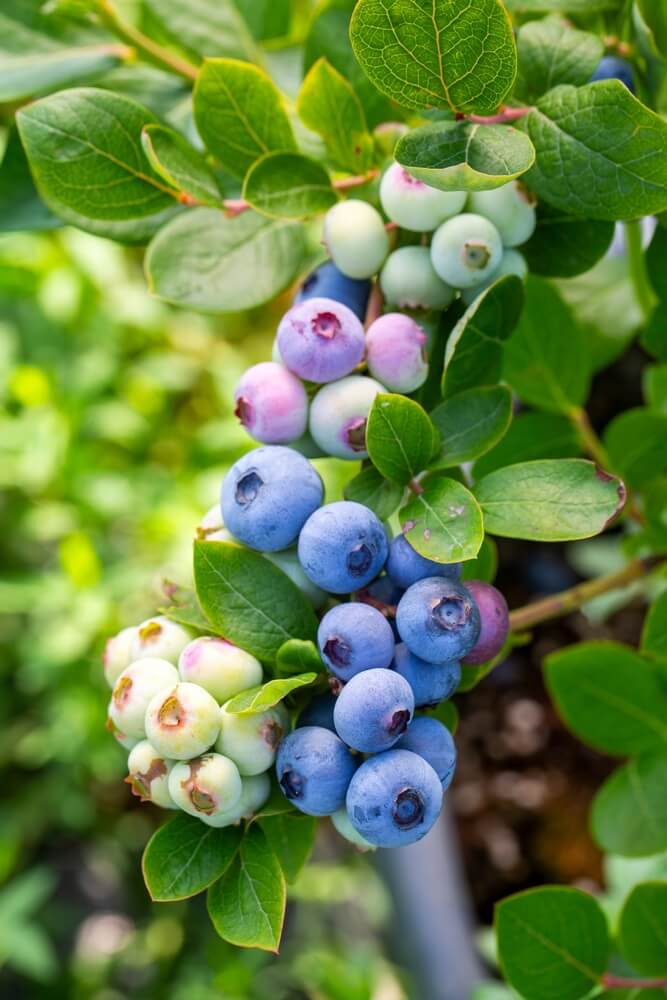
Here are the critical dates that all blueberry growers should be aware of.
April
Prime planting time! Get those nursery plants or rooted cuttings in the ground after the last frost. April is also the time to apply your annual dose of acidic fertilizer and refresh the mulch around established blueberry plants. Watch for early bloomers starting to flower – have frost protection ready for surprise cold snaps.
May
May is flower power month! Most varieties will be blooming now, so keep an eye out for busy bees doing their pollination magic. Water consistently as the weather warms up, and remove any weeds that try to muscle in on your blueberries’ territory.
June
Baby berries are forming! June is when your bushes need the most water, so don’t let them get stressed. You’ll see tiny green berries starting to develop – resist the urge to taste-test everything. If this is your plants’ first year, be strong and remove those flower clusters so the plant can focus on root development instead of fruit production.
July
Early varieties start turning blue! However, remember that blue doesn’t necessarily mean ripe. Wait until they practically fall into your hand. Begin your harvest routine by checking every few days. Maintain consistent watering. Developing berries are primarily composed of water, and stressed plants produce smaller, less flavorful fruit.
August
August is peak harvest season for most varieties! You’ll be picking berries every 2 to 3 days from now on. Early morning picking yields the best flavor and provides the longest storage life. August is also a great time to take softwood cuttings if you want to propagate your favorite bushes – they root easily in the warm weather.
September
Late-season varieties are still producing, but it’s time to start preparing for fall. Reduce watering slightly as temperatures cool down. September is the right time to plant new bushes, as they’ll have all of fall and winter to establish their roots before next year’s growing season begins.
October – Winter
Time to tuck your blueberries in for their winter nap! Apply a thick layer of fluffy mulch to protect roots from freeze-thaw cycles. Prune any necessary dead or damaged wood (reserving major pruning for late winter). If you’re in a harsh climate, consider wrapping young plants in burlap to protect them from winter burn, a condition caused by cold winds.
Read More – How To Grow Bush And Pole Beans In Your Backyard Garden – From Seed To Harvest!
5 Best Blueberry Shrub Cultivars
I love all blueberry varieties! But the following five are my favorites.
Bluecrop
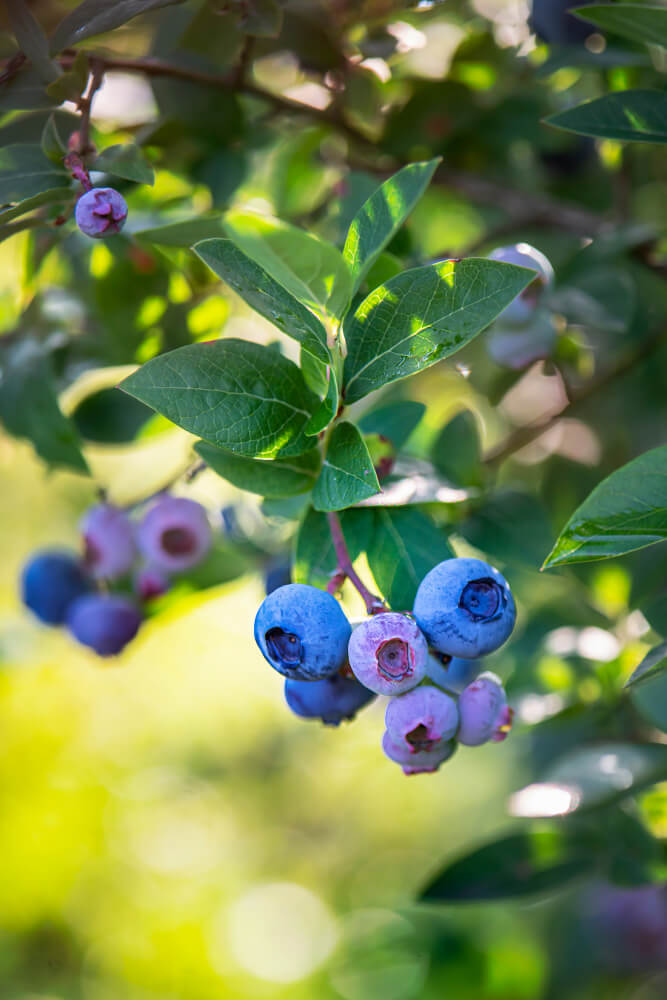
Bluecrop is a yummy mid-season variety that seems practically bulletproof. It tolerates both cold winters and hot summers better than most cultivars. The berries are large, firm, and have that perfect sweet-tart balance that makes them incredible fresh or baked.
- USDA Growing Zones: 4 through 7.
- Harvest Season: Mid-season.
- Yield: High.
- Best Way To Eat: Versatile. Great for muffins, pancakes, and freezing.
Bluecrop bushes are vigorous growers that consistently produce heavy crops. It’s a wise go-to choice for both beginners and commercial growers.
Duke
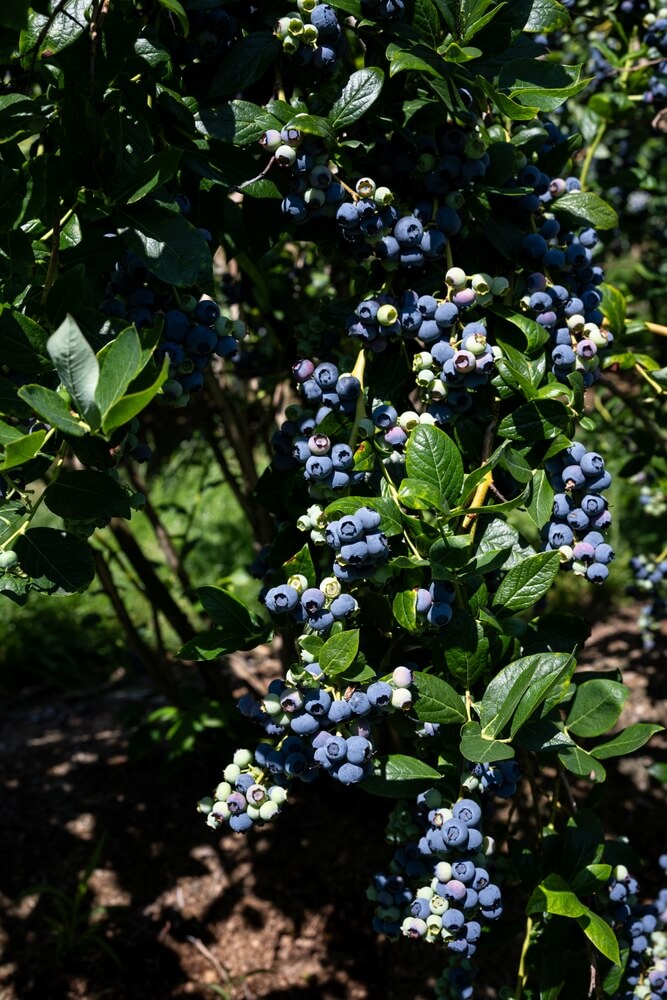
Your early-season superhero that kicks off the blueberry harvest when you’re desperately craving fresh berries! Duke produces medium to large, light blue fruits with excellent flavor that ripen in early July. The bushes are compact and sturdy, rarely needing staking, and they’re surprisingly cold-hardy.
- USDA Growing Zones: 4 through 7.
- Harvest Season: Early-season.
- Yield: High.
- Best Way To Eat: Fresh eating, smoothies, cereal toppers.
Best of all, Duke is partially self-fertile but really shines when paired with other varieties for cross-pollination.
Patriot
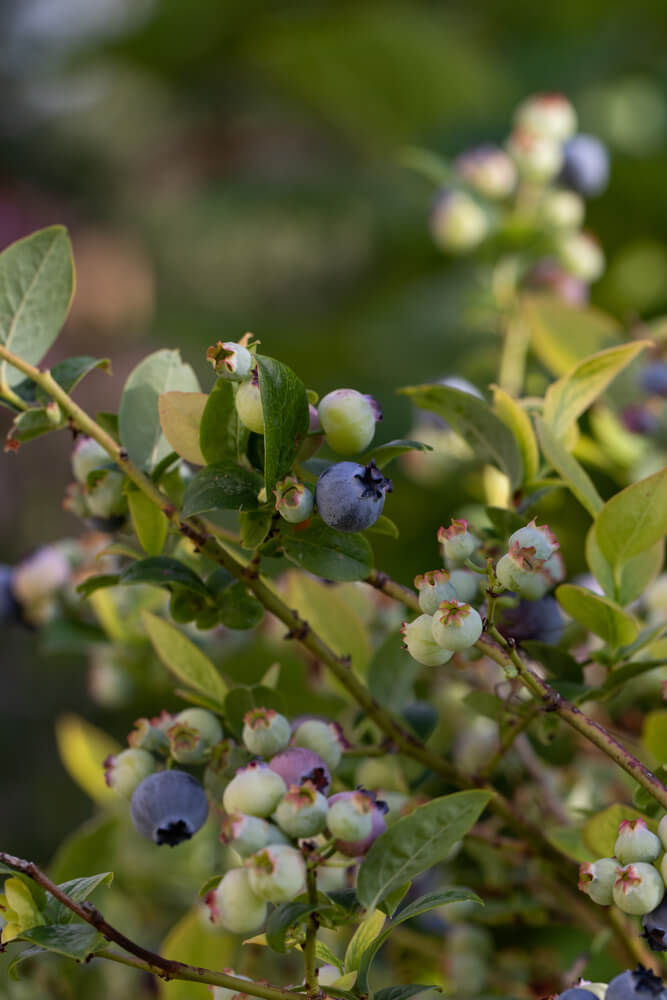
Patriot is a true northern warrior explicitly bred for harsh climates. It laughs at temperatures that would make other varieties cry. This early-to-mid-season variety produces large, sweet berries on compact bushes that rarely exceed 6 feet in height, making them ideal for smaller spaces.
- USDA Growing Zones: 3 through 7.
- Harvest Season: Early to mid-season.
- Yield: Medium to high.
- Best Way To Eat: Jams, preserves, or baked into muffins.
The berries have that classic blueberry flavor with just enough tartness to keep things interesting, and they’re excellent for fresh eating or preserving.
Rabbiteye
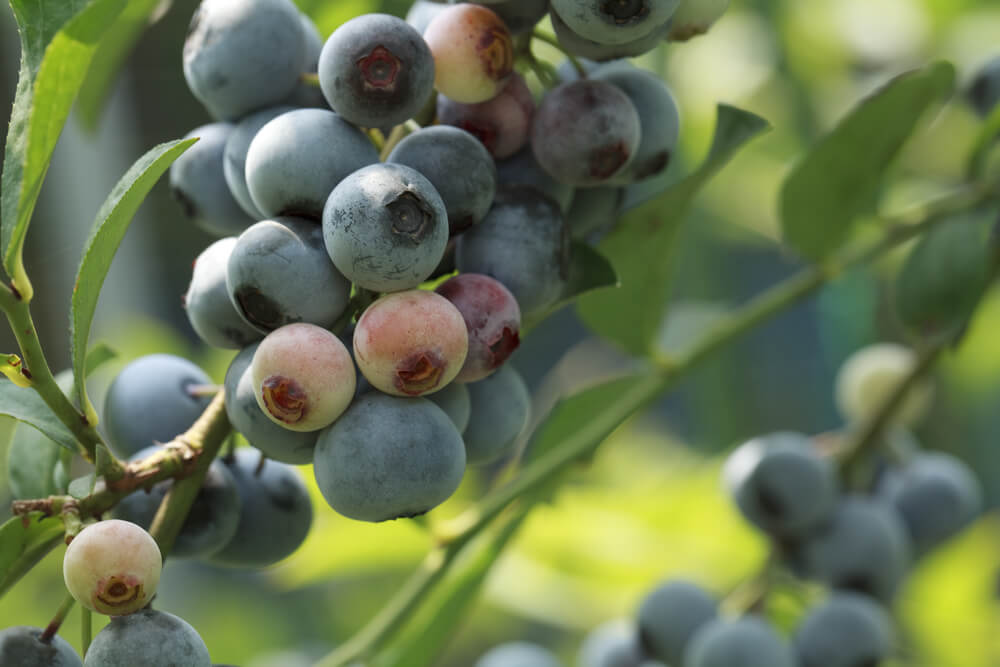
The heat-loving southerner of the blueberry family! These vigorous, tall bushes (they can reach 15+ feet!) thrive in hot, humid climates where other blueberries struggle. The berries start pink and ripen to a deep blue-black with a slightly different flavor profile than northern varieties – a bit more intense and wine-like.
- USDA Growing Zones: 7 through 9.
- Harvest Season: Mid to late-season (varies by cultivar).
- Yield: High.
- Best Way To Eat: Fresh snacking, cobblers, and pies.
Rabbiteye varieties need cross-pollination with other Rabbiteye types, but when they’re happy, they’ll produce berries for decades.
Earliblue
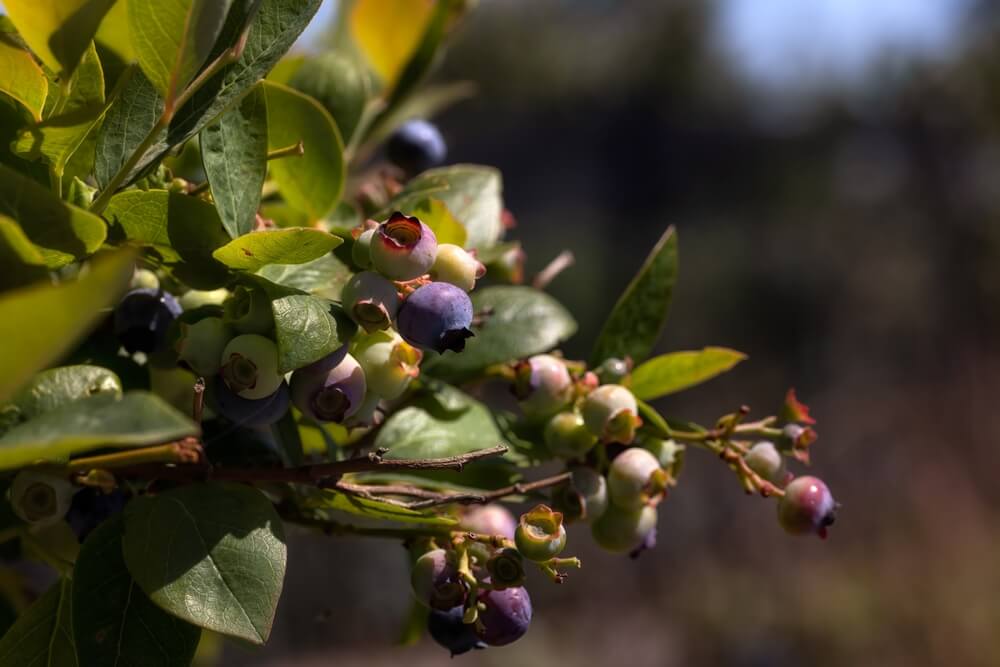
The eager beaver that gives you berries when everyone else is still waiting! This extra-early variety ripens in late June to early July, producing medium-sized, light blue berries with a mild, sweet flavor. The bushes are moderately vigorous and quite cold-hardy, although they can be somewhat finicky about soil drainage.
- USDA Growing Zones: 4 through 7.
- Harvest Season: Very early-season.
- Yield: Medium.
- Best Way To Eat: Fresh from the bush, in salads, or blended into smoothies.
Earliblue is perfect if you want to extend your harvest season or if you can’t wait for those first homegrown berries of summer.
Read More – How To Grow Gorgeous Blackberry Shrubs From Seed, Cuttings, Or Suckers!
Common Issues With Homegrown Blueberries
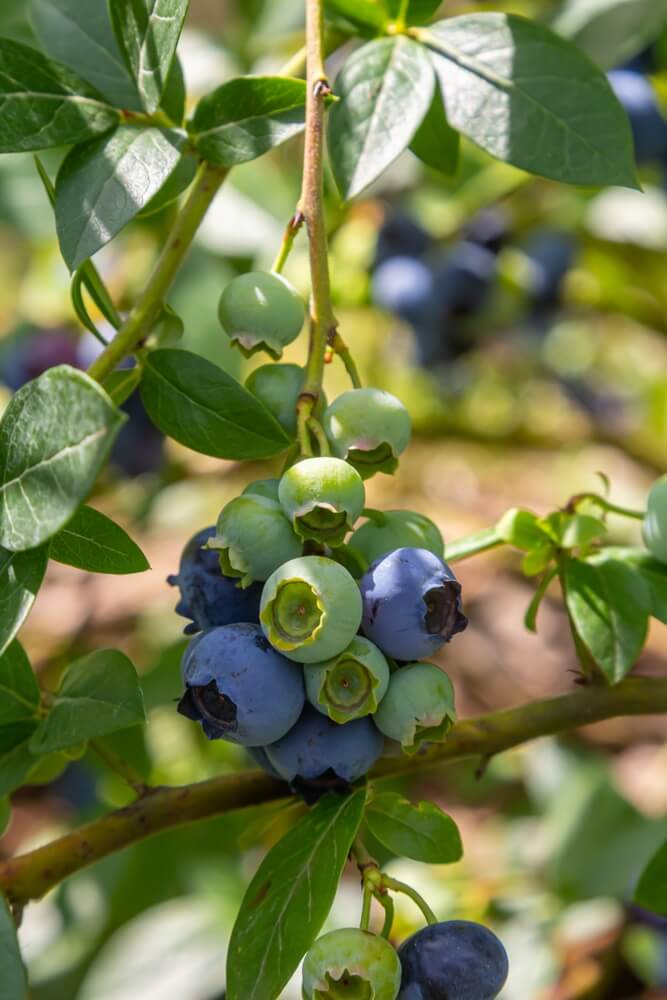
Even experienced gardeners easily stumble when growing blueberries because these beauties have some particular (and honestly, demanding) requirements that other fruit plants don’t have. The good news? Most blueberry disasters are totally fixable once you know what went wrong!
1. Ignoring Soil Acidity Needs
Ignoring soil acidity is the number one factor that kills blueberries. It’s sneaky because your plants may appear healthy for a while before gradually declining in health. Regular garden soil with a neutral pH will leave your blueberries struggling to absorb nutrients, resulting in yellowing leaves, poor growth, and practically no berries.
The fix is easy. Test your soil pH regularly. Adjust it with peat moss, pine needles, or sulfur. Are you dealing with stubbornly alkaline soil? Then consider growing your blueberry shrubs in raised garden beds or containers filled with acidic potting mix.
2. Planting Only One Bush (Lack Of Pollination)
Sure, blueberries are technically self-fertile. But planting just one lonely bush is like going to a dance party by yourself. It might work, but it’s not nearly as fun (or productive)! Single bushes often produce more minor crops with tiny, underwhelming berries.
The solution is simple: plant at least two different varieties that bloom around the same time. Not only will you get way more berries, but they’ll be bigger, juicier, and more flavorful. Think of it as blueberry matchmaking. Everyone’s happier when they have a partner!
3. Improper Water Management And Drainage
Blueberries are the Goldilocks of the fruit shrub world when it comes to water. Not too wet, not too dry, but just right. Overwatering can lead to blueberry root rot and other fungal issues. However, underwatering during fruit development results in sad, shriveled berries.
The secret is consistent moisture. Install drip irrigation or soaker hoses! That’s the easiest way to ensure steady, deep watering. And always plant in well-draining soil or raised beds. A thick layer of mulch helps maintain moisture balance and keeps weeds at bay.
Read More – How To Grow Beautiful Lavender Flowers From Seed In Your Backyard Garden!
Conclusion
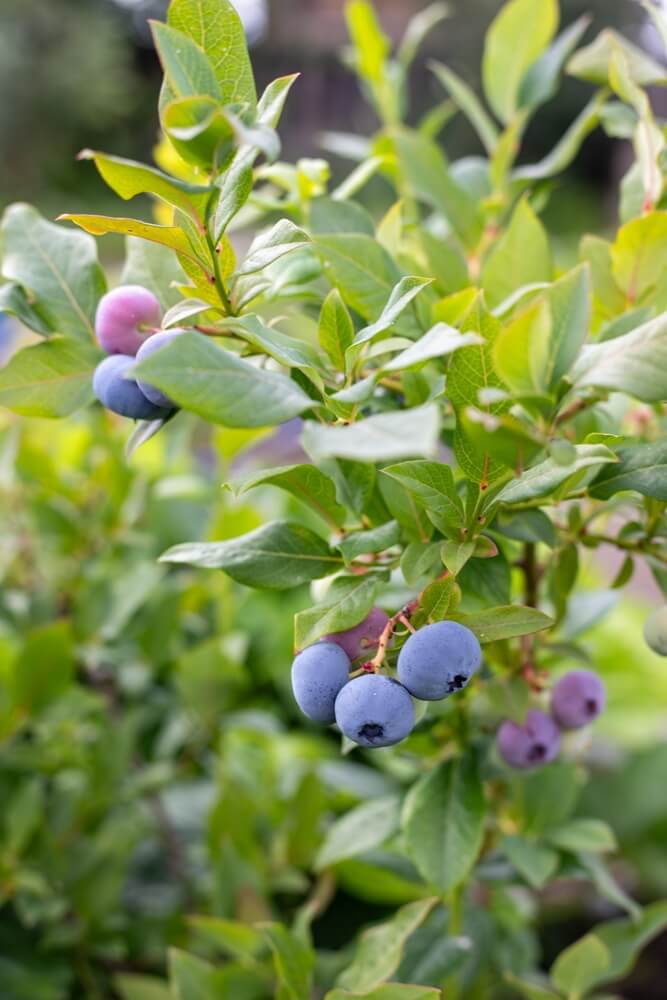
That’s everything you need to grow epic homegrown blueberries! Now all you need to do is pick out a few of your favorite blueberry cultivars at a local nursery – or find a good blueberry host plant from which to harvest cuttings. Your future pancakes (and smoothies, and pies, and midnight snacking sessions) will thank you!
What about you?
- Are you going to grow some yummy blueberry shrubs this year?
- Which blueberry cultivars will you grow?
- Will you plant them in the fall? Or wait until the spring?
Thanks for reading.
Have a great day!

